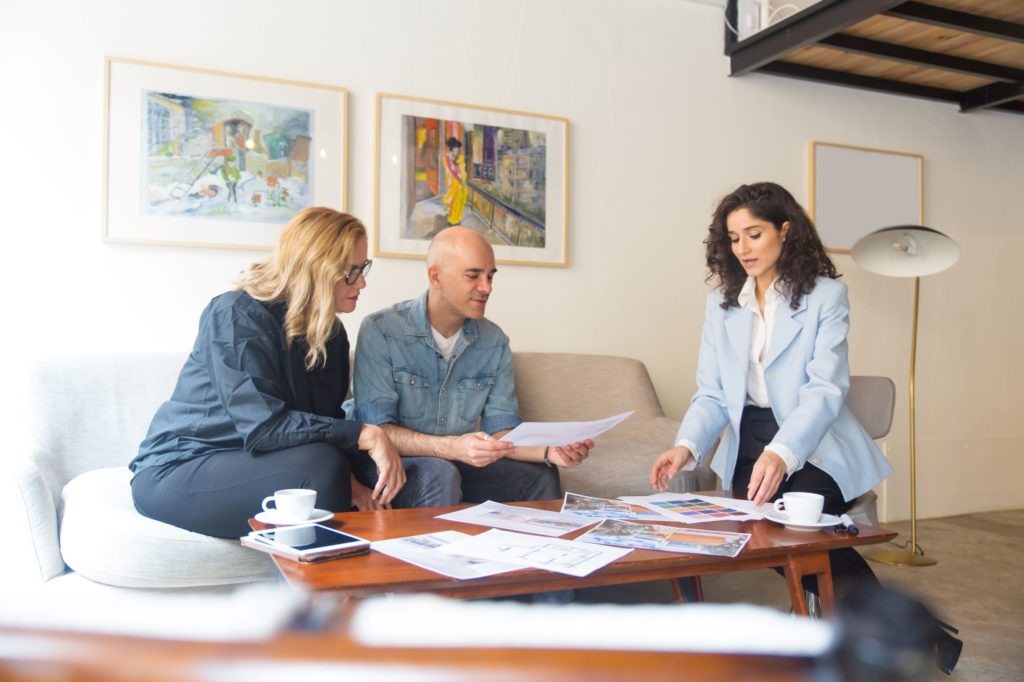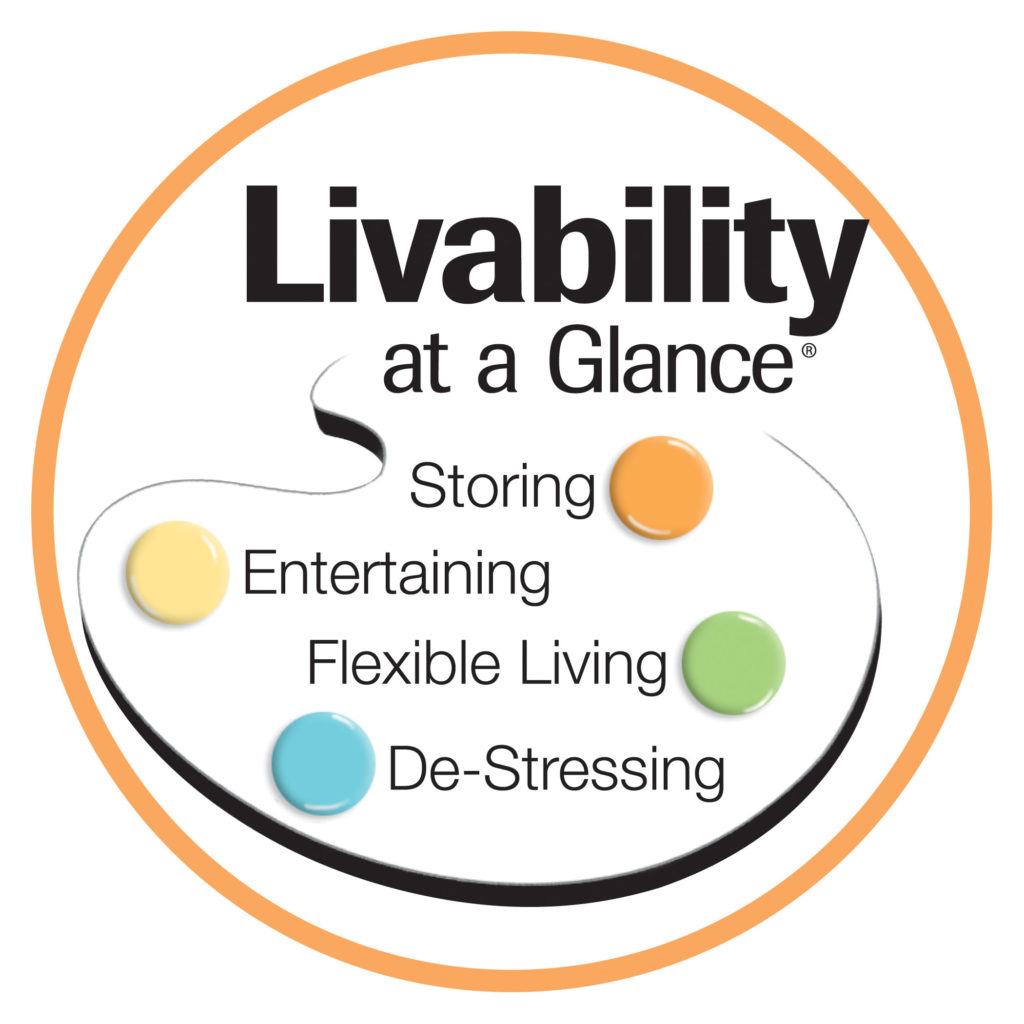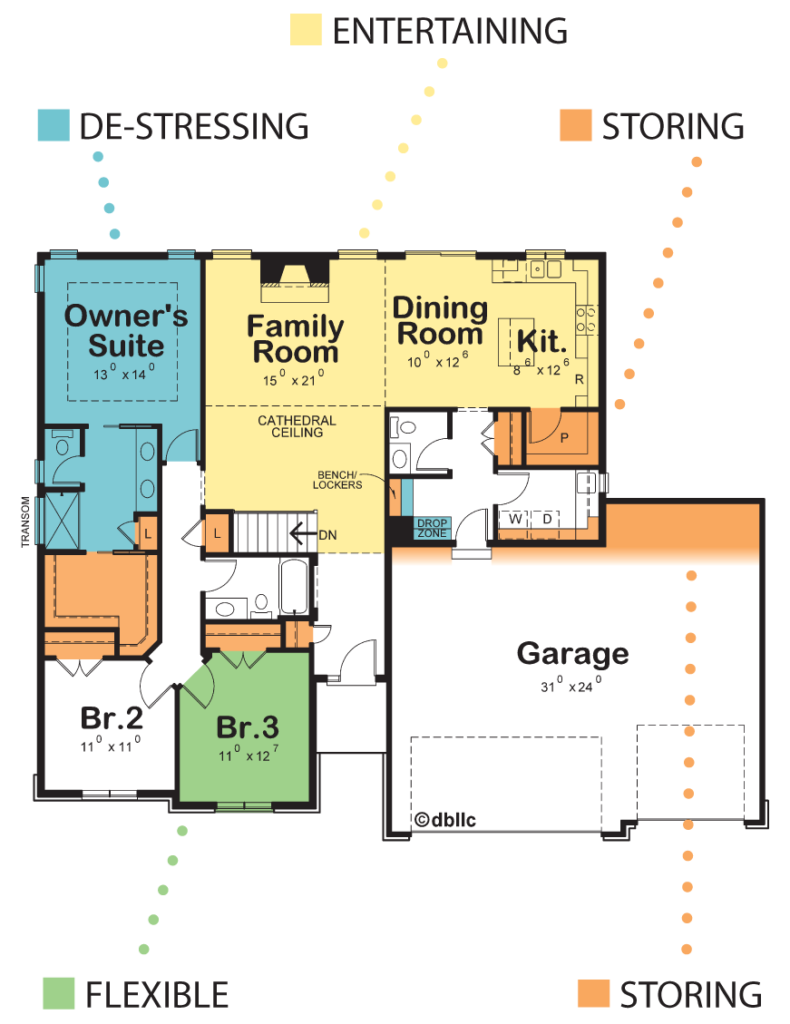What began as a discussion in January 2003, traveling back from the NAHB International Builders’ Show, has turned out to be one of the most powerful drivers in residential design – a Woman-Centric approach. Design Basics was already at that time one of the largest home plan design firms, yet something was missing. We were seeking and getting great feedback about our home plans from customers – mostly professional builders. Builders loved our home designs and provided valuable insights, positive and negative, into how to make them even better.
But we weren’t enjoying such communication with the home buyers, and in particular, we weren’t hearing much from women about our designs. Could it be that men and women looked at a home’s design differently?
Most architects are men. Most engineers are men. Most home builders are men. Most home building tradespeople are men. Did the sexes look at total square footage differently? Not really, though it’s always a consideration. The home design’s influence on cost-per-square-foot? While price is important, that wasn’t a key differentiator. How about an energy-efficient, green home? That interested both genders, though men were more likely to brag about it.
Without realizing it, as we later came to recognize, the comments and suggestions we had been receiving from our trade customers were mostly being relayed through a set of “male filters.” We purposely embarked on a mission to achieve an ever-greater understanding of, and appreciation for, women’s preferences in the home. Women told us about things they would change if they could regarding home design and construction as well as things they would do differently if they could do it all over again. They also pointed out design challenges that had no obvious solution, but still caused frustration and sometimes regret.
Through focus groups, one-on-one interviews, observing how women overcame design deficiencies in their homes, asking lots of questions and listening – really listening – Design Basics was inspired to develop homes with increased livability and style. Author Marti Barletta had identified that women’s value equation demanded both function and aesthetics. There would be no more entering the home from the garage through a laundry/mudroom. There was a new appreciation for storage, and that storage can be beautiful. Women were tired of dusting big, unused bathtubs. Pets were part of the family, too, and pet accommodations were an important aspect of home design.
We also learned that perhaps even more important than function and form was the two-sided coin of social design: “What this home says about me,” and “How this home makes me feel about myself.” We reveal ourselves – our beliefs, what we care about, who we are – through our homes. The exact same dollar investment in windows might be used to create a remarkable window wall with dreamy views out the back, or to provide standard-size windows on two sides of multiple rooms in the home for increased light levels and cross breezes.
Our research uncovered the four primary “lenses” women reported using to judge a home design’s suitability for her and her household. This became the basis for Livability at a Glance™, using color coding on the floorplans to identify areas corresponding to each of those lenses. As we started to design homes through these lenses, we, too, began to “see” design differently. We even developed a fun online quiz that identifies which lens is most important to you – and your future home – which you can take here.
Color coded floor plans bring the Livability at a Glance concept to life, making it easier to appreciate design elements and envision how this home ‘lives.’ (pictured: Locklear Grove – plan #42314)
The marketplace has voted. With their dollars. Woman-Centric home designs are seen as different, and better. In obvious and not-so-obvious ways, women’s feedback has inspired so many design amenities that solve real-world problems, like getting the entire family out the door on time in the morning with everything, contributing to a less stressful morning. Design Basics has been recognized for industry-leading design innovation, but really, it’s simply designing solutions to challenges that women brought to our attention.
Whether the basis for new home design or modifying an existing home plan for enhanced livability and style, Woman-Centric home design is how we help buyers get the best home for their investment. Woman-Centric home design is having a profound impact on American housing, but it’s not sexist. Rather, in the historically male-dominated home building industry, Woman-Centric design is helping return the pendulum of home design to a more gender-neutral position, appreciating everyone in the household.
For more resources on thoughtful design and products:
- View other articles on our blog
- Browse our Her Home™ Magazine
- Thoughtful Design Concepts
Cover photo: <a href='https://www.freepik.com/photos/background'>Background photo created by pressfoto - www.freepik.com</a>




